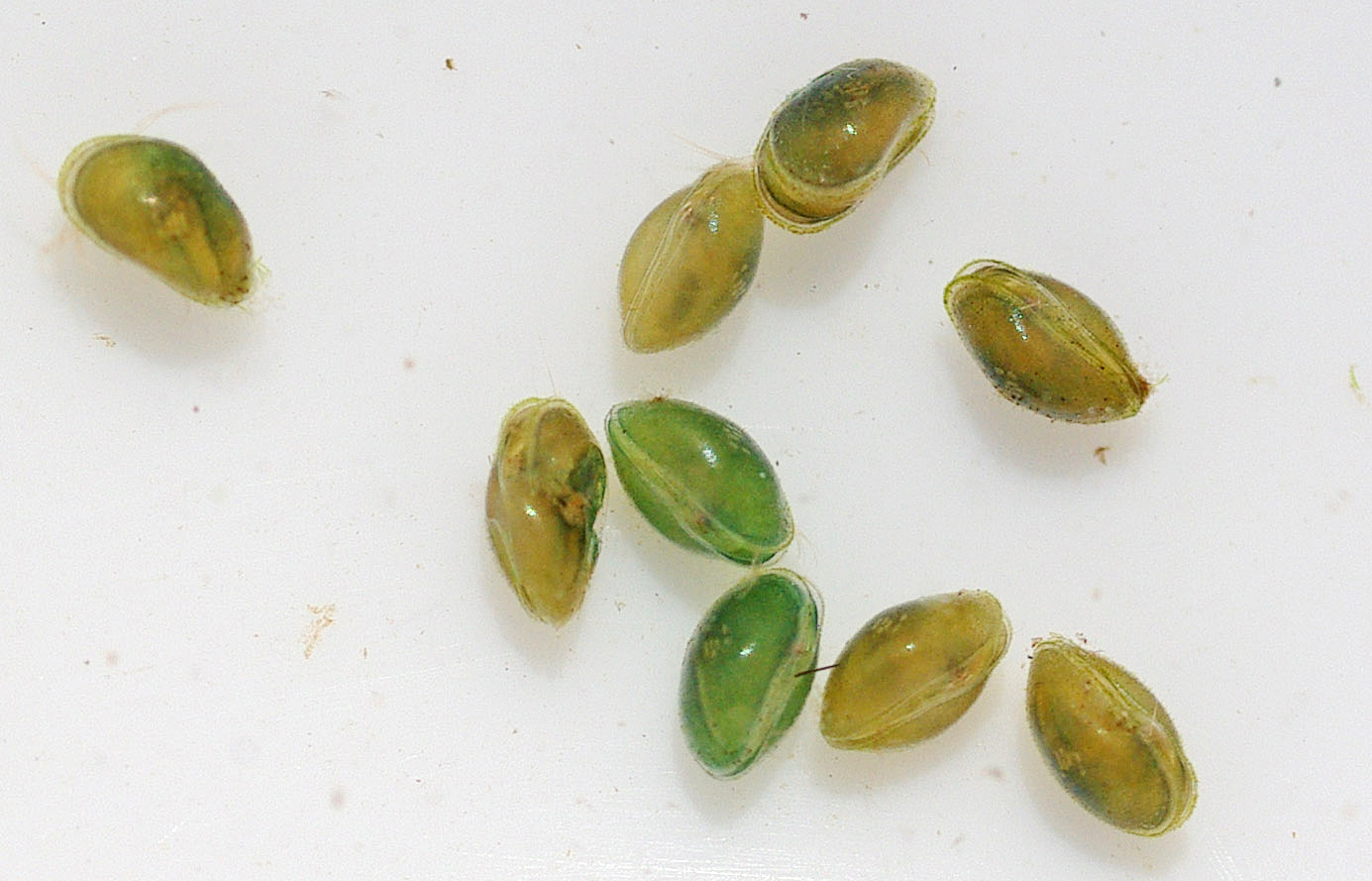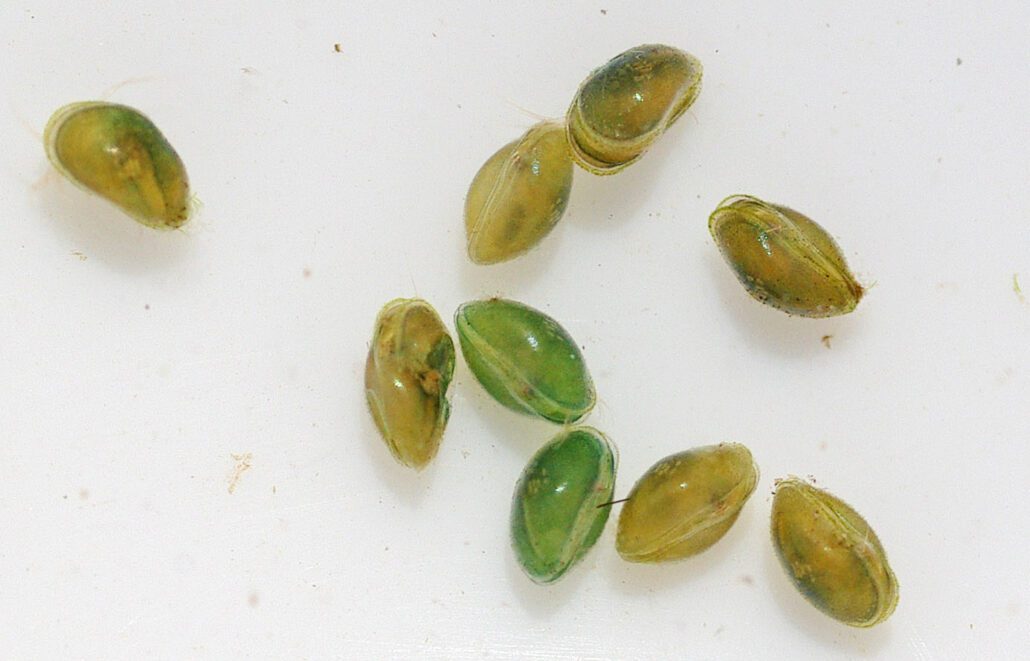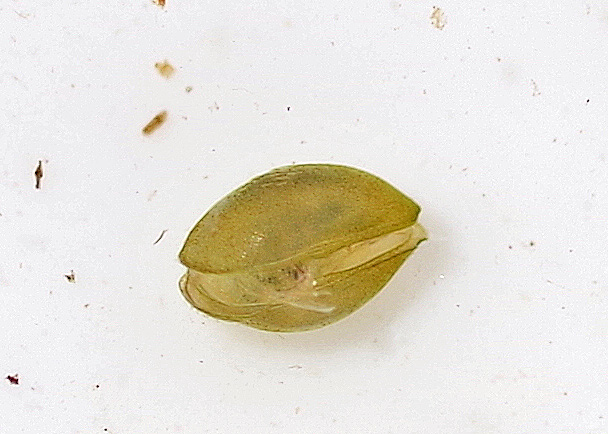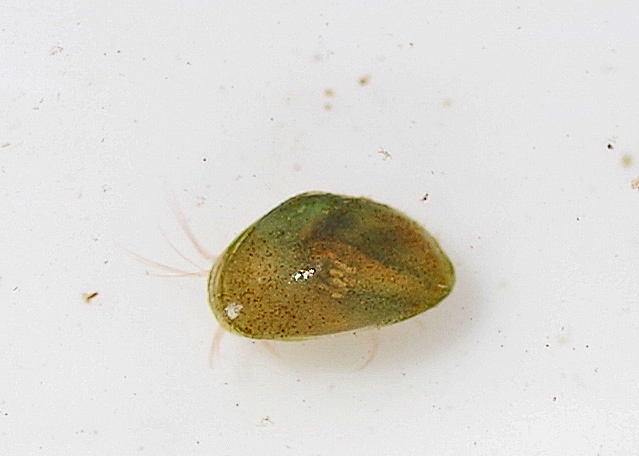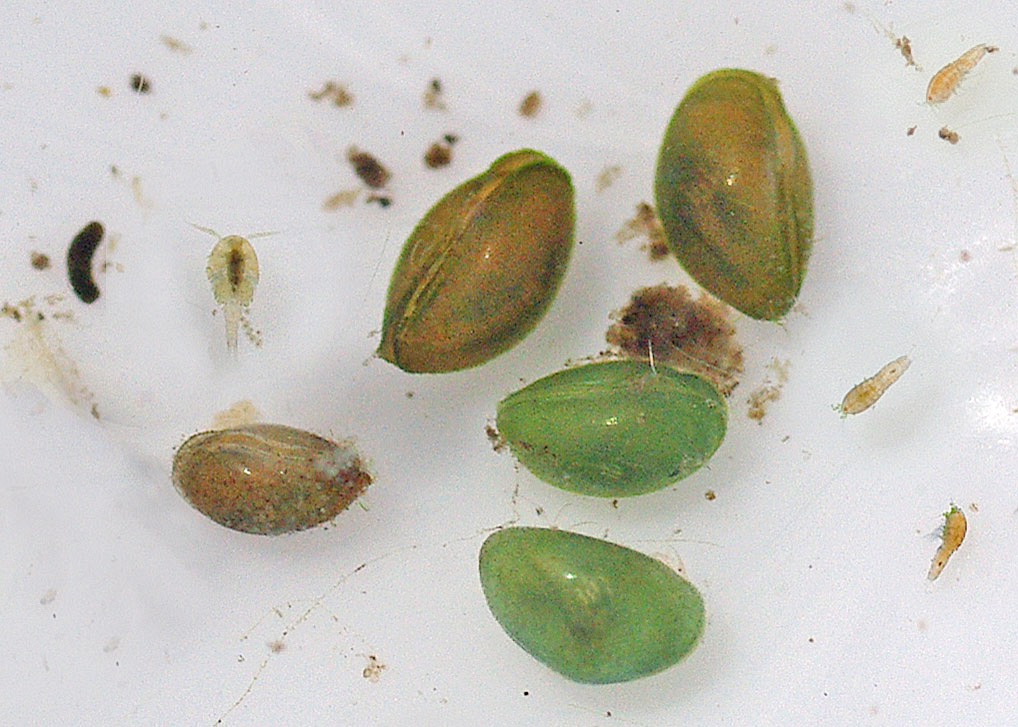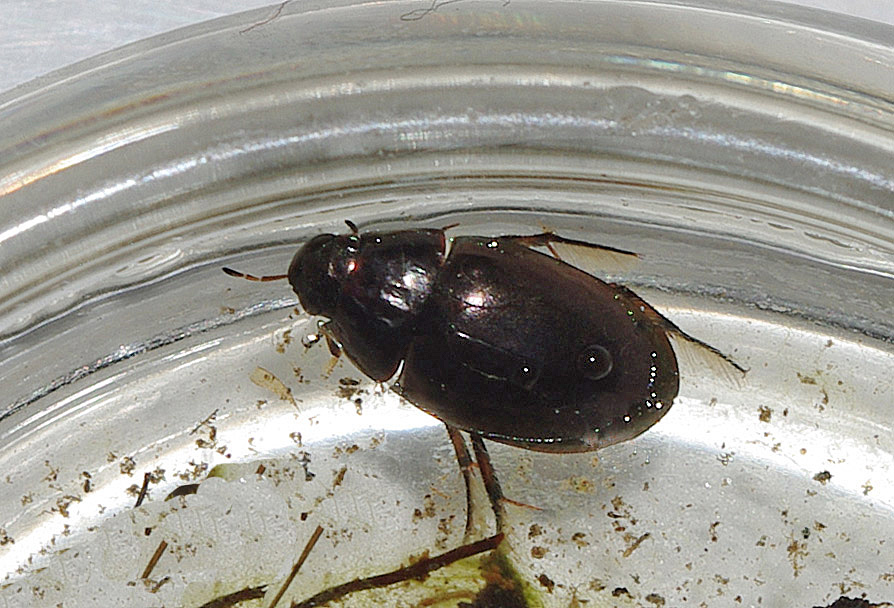
by Kate Redmond
Wetlands Month IV Water Scavenger Beetle revised
Salutations, BugFans,
We’re wrapping up National Wetlands Week with a beetle that you don’t even need a magnifying glass to see! This is a revision of an episode that first aired in the summer of 2009 – new words; no new pictures.
BOTW hasn’t plunged underwater for several months now, but in this episode we will get a chance to get our collective gills wet again. Water scavenger beetles are hefty beetles (some measure more than 1 ½ inches) in the family Hydrophilidae that are easily mistaken for Predaceous Diving beetles (family Dytiscidae https://bugguide.net/node/view/1415131/bgimage) of previous BOTW fame (https://uwm.edu/field-station/bug-of-the-week/predaceous-diving-beetle/). Other than sharing their classification in the beetle Order Coleoptera, they are not closely related. North America hosts more than 250 species of Water scavenger beetles, including an introduced, non-aquatic species that makes itself at home in dung, where its larvae eat maggots (fly larvae).
The usually-black, dome-shaped Water scavenger beetles https://bugguide.net/node/view/1644233/bgimage look a little less streamlined than the usually-black Predaceous diving beetles, and their flat, ventral surfaces often sport a keel. , In contrast to the Predaceous diving beetle’s oar-like strokes https://bugguide.net/node/view/1811015/bgimage, the Water scavenger beetles’ swimming involves alternate left-right-left-right strokes of their flattened, hairy, second and third pairs of legs https://bugguide.net/node/view/378043/bgimage, https://bugguide.net/node/view/1925805/bgimage. Their swimming may be clumsy by comparison, but scavengers don’t need the speed and maneuverability of predators. They are good flyers https://bugguide.net/node/view/742111/bgimage that may leave their watery homes and fly to lights at night (just scoop them up in a paper cup and return them to the water).
Along with their beetle classification, they also share with Predaceous diving beetles the shallow waters of freshwater ponds and quiet stream edges, although Water scavenger beetles like their weedy, algae-choked habitat a bit warmer than Predaceous diving beetles do. What they do not share is a lifestyle. Adult Water scavenger beetles (depending on species) may feed on their aquatic neighbors or may be recyclers, with a food pyramid that includes algae and, as their name suggests, decaying vegetation and dead animal tissue.
The very-carnivorous Water scavenger beetle larvae (https://bugguide.net/node/view/1872987/bgimage) are described as “sluggish” and are found crawling on the pond floor or climbing on underwater vegetation. The larvae are couch-potato versions of the sleek Predaceous diving beetle larvae/water tigers (https://bugguide.net/node/view/2276347/bgimage), though they sometimes share the same “water tiger” moniker. Their feeding category is “engulfer-predator” – they use their powerful, hollow jaws https://bugguide.net/node/view/183298/bgimage to subdue and then vacuum out the juices of their prey. Their food-list includes their brethren, along with other aquatic invertebrates (they love mosquito larvae) and they also go after tadpoles, snails, and mini-fish.
According to Eaton and Kaufman, in the Field Guide to Insects of North America, some species of Water scavenger beetles can squeak by rubbing their abdomen against the underside of their wing covers. Wikipedia lists a repertoire of “stress calls, a male courtship call, a male copulating sound, and a female rejection buzz.”
Water scavenger beetles overwinter as adults, and in early summer, females lay eggs in a cocoon-like structure that’s attached to aquatic plants or left to float like a raft. In The New Field Book of Freshwater Life, Elsie Klots says that the egg case of one genus includes a vertical “mast” that extends above the water’s surface. The mast may be involved with respiration, but it may also be an escape hatch for larvae – escape being vital in a group whose young hatch from eggs within a case and immediately start chowing-down on their siblings. A case may hold 100+ eggs at the start, but cannibalism reduces the number of larvae that live to exit.
They spend a month underwater as larvae and then leave the water and create a pupal cell by scooping away soil with their mandibles. It takes them 36 to 48 hours to dig a hole that’s three inches deep. They climb in and pupate, reappearing as adults in a few weeks.
Predaceous diving beetles breathe, as many aquatic insects do (and as Water scavenger beetle larvae do), by backing their rear end up to the water’s surface and taking in air with a tube or pore (some Water scavenger beetle larvae also have exterior, branched gills https://bugguide.net/node/view/1058195/bgimage). Adult Water scavenger beetles break through the surface film with un-wet-able (“hydrophobic”) antennae that form a funnel through which air is transported. Oxygen is stored in a space under the elytra (hard wing covers), and the beetle takes that air into its body through its spiracles (breathing pores). The nickname “silver-beetle” is a nod to its secondary source of oxygen – a film of air bubbles that typically covers the beetle’s flat ventral surface, trapped there in a layer of thick hairs. Air held in these hairs can be renewed from oxygen suspended in the water, allowing the beetle to stay under longer.
It seems that Water scavenger beetles have a Super Power – at least, one Australian species does! It’s the ability to locomote on the underside of the surface film (remember – due to electrical charges, the layer of water molecules at the surface of a body of water is “tougher” than the molecules below it, which is what allows some insects to skate along its surface. This same surface tension makes it hard for small critters to break through from below). See the video here https://www.smithsonianmag.com/smart-news/beetle-can-walk-along-underside-waters-surface-180978115/. Snails and leeches can do this, too.
The air trapped on the underside of its body may help the beetle stay “belly-up” without using extra energy, giving it enough buoyancy to stroll along under the surface film without breaking through, though each footstep makes the water dimple upwards (scientists don’t know exactly how the beetle’s feet get traction). Researcher John Gould recounted seeing the phenomenon for the first time, “The beetle was casually walking along the underside of the water’s surface with ease while upside down. Every now and then, it would come to a stop, and then kept plodding along across the surface as if it was walking across any regular solid.”
How does the beetle do this? Why? Are there other beetles that do it? Scientists who collect aquatic beetles report that when they roil up the substrate with their nets, beetles often float up to the surface. But do they walk around up/under there, or do they return to their normal haunts ASAP? So many questions – stay tuned.
WATER SCAVENGER BEETLE MISCELLANIA:
J. Reese Voshell, Jr, in A Guide to Common Freshwater Invertebrates of North America, says that “beetle” comes from the Old English “bitula” – “to bite” – a reference to the strong jaws of adult beetles.
Shelly Cox, in her blog called “MOBUGS – Missouri’s Majority,” shares a great (but unattributed) quote about Water scavenger beetles – “This is a water beetle. It is the hardest object in the world to pick up with tweezers. The second hardest is Mount Everest.” The BugLady can’t speak to either of those.
Once upon a time, a Naturalist named Linda Bower wondered what she would see if she put a camcorder in a pond. A whole lot, as it turned out. She has expanded her gaze to include terrestrial bugs and non-insects, as you will see if you check the excellent offerings at https://www.youtube.com/channel/UCJ2iEp9598fAgiqdMwMZX_g. Glimpses of a world that exists under our radar. For the Aquatic playlist click on “Life in and Around the Pond.”
And remember – Every Month is Wetlands Month (and every fifth living thing is a beetle)!
Kate Redmond, The BugLady
Bug of the Week archives:
http://uwm.edu/field-station/category/bug-of-the-week/

